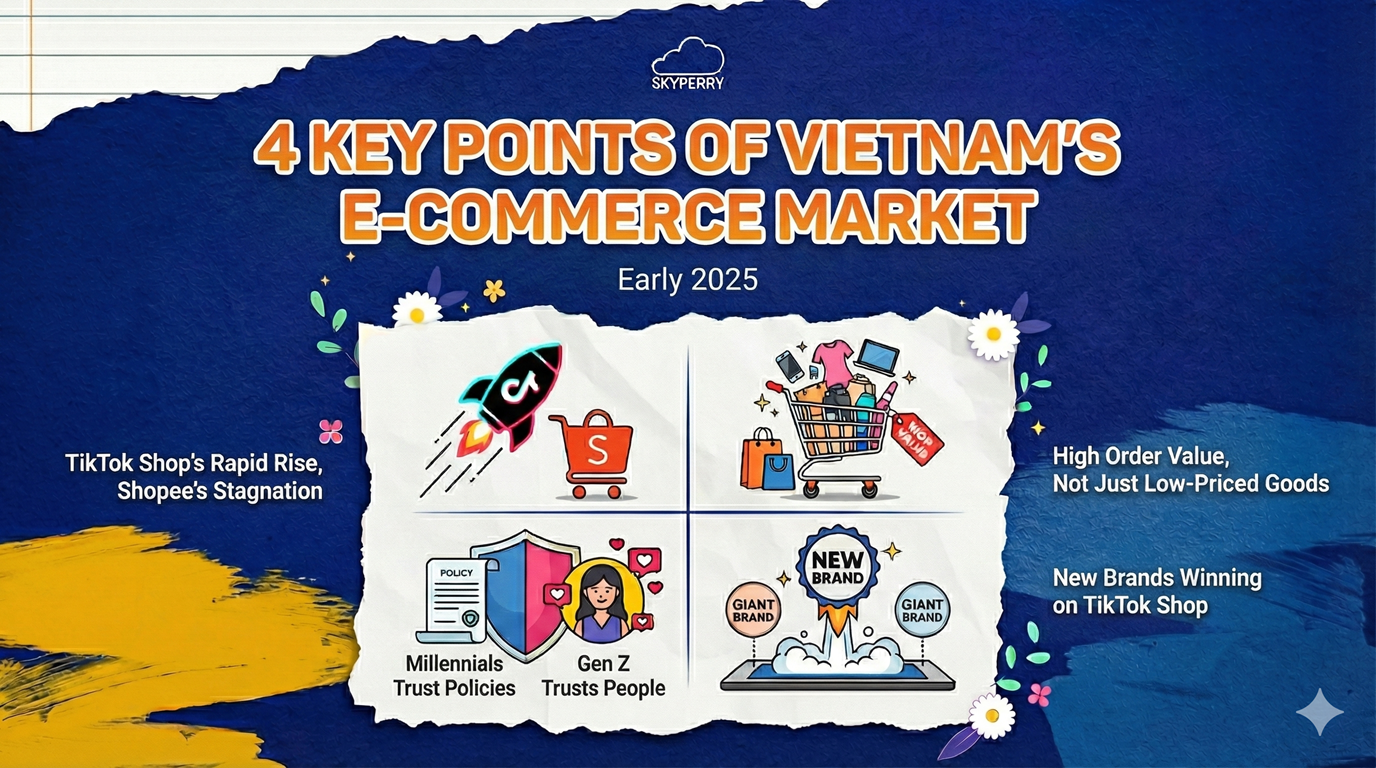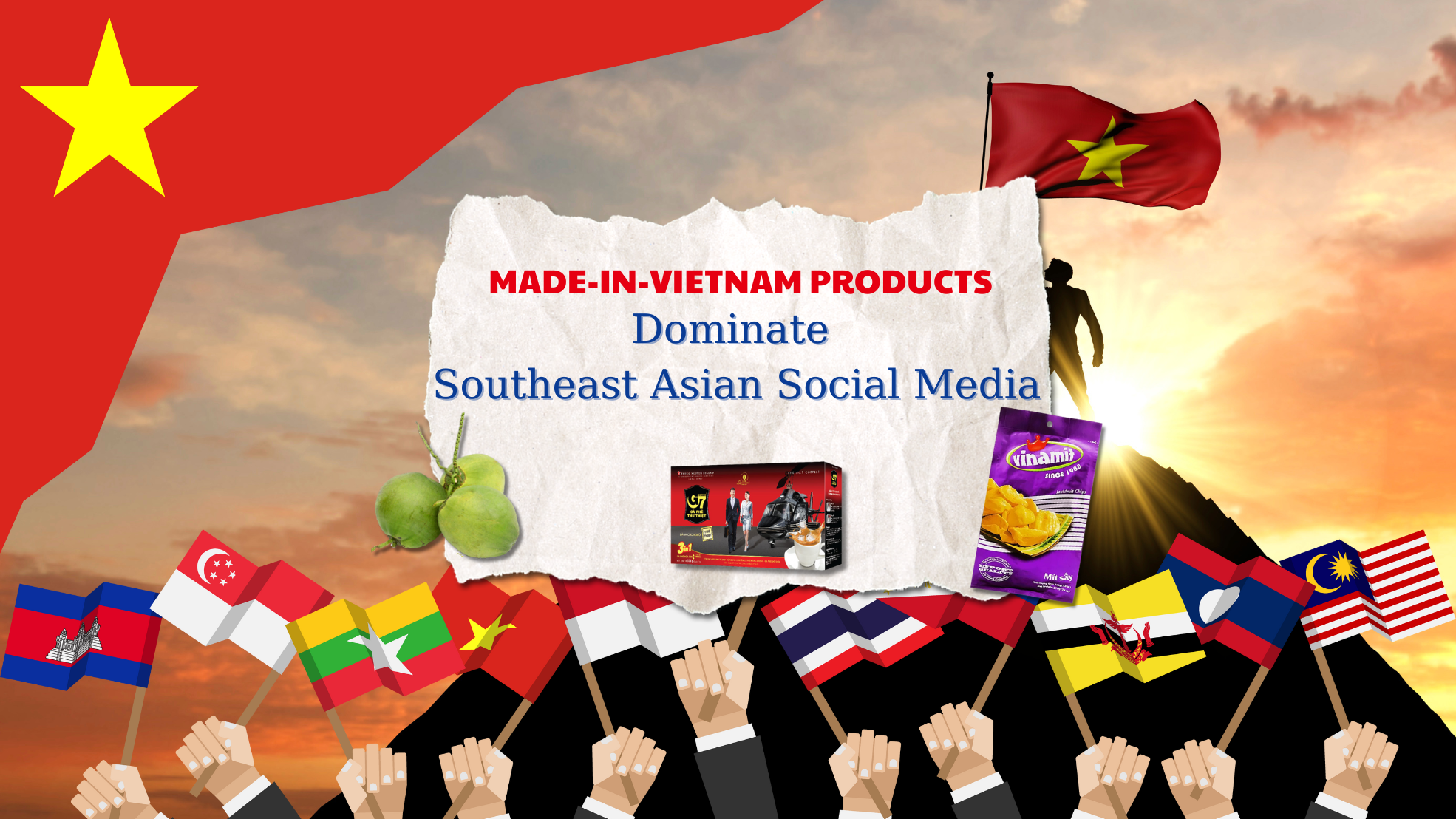E-commerce platforms such as Lazada, Shopee, Tiki… have launched global sales programs to help expand international markets for Vietnamese manufacturers for a while. These programs have opened up opportunities to reach customers in Southeast Asia and internationally for businesses of all sizes. Although the programs are designed differently for each platform, in general, the programs will support import-export procedures, logistics and order processing to bring products to consumers in Southeast Asia. Thanks to that, these programs have helped many Vietnamese brands increase sales in foreign markets.
However, this program still has many shortcomings and limitations, especially in terms of long-term business benefits, which makes many Vietnamese businesses hesitant. Below are some prominent limitations:
Lack of Control Over Sales and Customer Data
The seamless operation of these platforms, with their integrated logistics, product display, and customer support, significantly limits the role businesses play in the customer journey. For example, Shopee’s policy is to manage product listings and displays on Shopee International on behalf of the business. While businesses can purchase advertising or visibility packages, they can only do so through the platform’s payment gateway, and the allocation and effectiveness of these ads are controlled by Shopee, with no performance guarantees. Sellers merely receive orders from Shopee and prepare shipments accordingly. They have no access to customer data, hindering their ability to understand their target audience, gather market feedback, and build customer profiles.
This convenience and comprehensive support can make businesses passive, preventing them from actively shaping their business strategies and effectively penetrating the local market.
Lack of Connection to Understand the Market, Consumer Trends, and Buying Behavior
Southeast Asia is a diverse market with variations in geography, economy, culture, religion, and stages of development. Consequently, each market exhibits unique consumer trends and buying behaviors, with varying preferences for Vietnamese products.
Businesses need guidance on the economic, geographic, and cultural characteristics of each country and how these factors influence consumer behavior. The stage of e-commerce development in each country also shapes online buying behavior, which businesses need to understand. This market knowledge is crucial for businesses to design products, select product categories, and tailor their offerings to local preferences.
Current cross-border e-commerce initiatives primarily focus on placing products on international e-commerce platforms, but lack guidance on product strategy. Simply listing products amongst thousands of others from various countries and hoping for success is akin to passive gambling.
Lack of Comprehensive International Marketing to Promote Brands and Drive Sales
When entering a new market, product and brand information needs to be localized for accessibility and consumer understanding. Local language information on the manufacturer’s official website allows consumers to research the product’s origin, ingredients, and quality certifications. This information is not just valuable for consumers, but also for media outlets, key opinion leaders (KOLs), and online retailers who rely on it to build trust and promote products to their audiences.
In markets like Indonesia and the Philippines, consumers are highly price-sensitive and value-conscious. Businesses need guidance on pricing strategies tailored to each market, considering that price levels and consumer spending power vary across countries and product categories.
Modern online consumer behavior involves multiple touchpoints. Before adding a product to their cart, consumers often consult reviews from other users or influencers on social media. In the Philippines, for instance, influencers have a significant impact on purchasing decisions, as Filipino consumers are heavily influenced by community and look to KOLs for social validation and lifestyle aspirations.
The SEAcommerce program, by collaborating with local KOLs, aims to facilitate the entry of Vietnamese goods into these markets.



